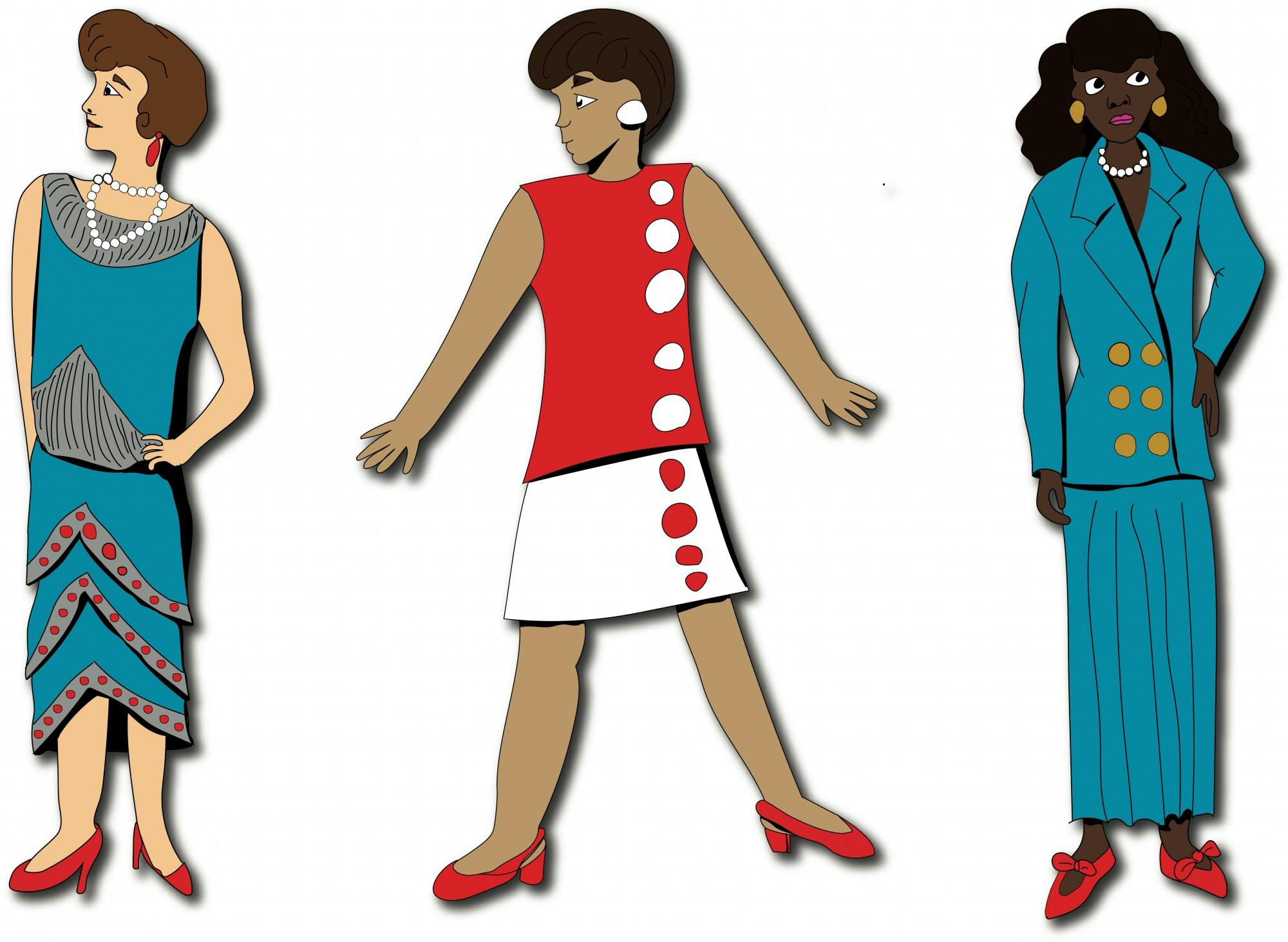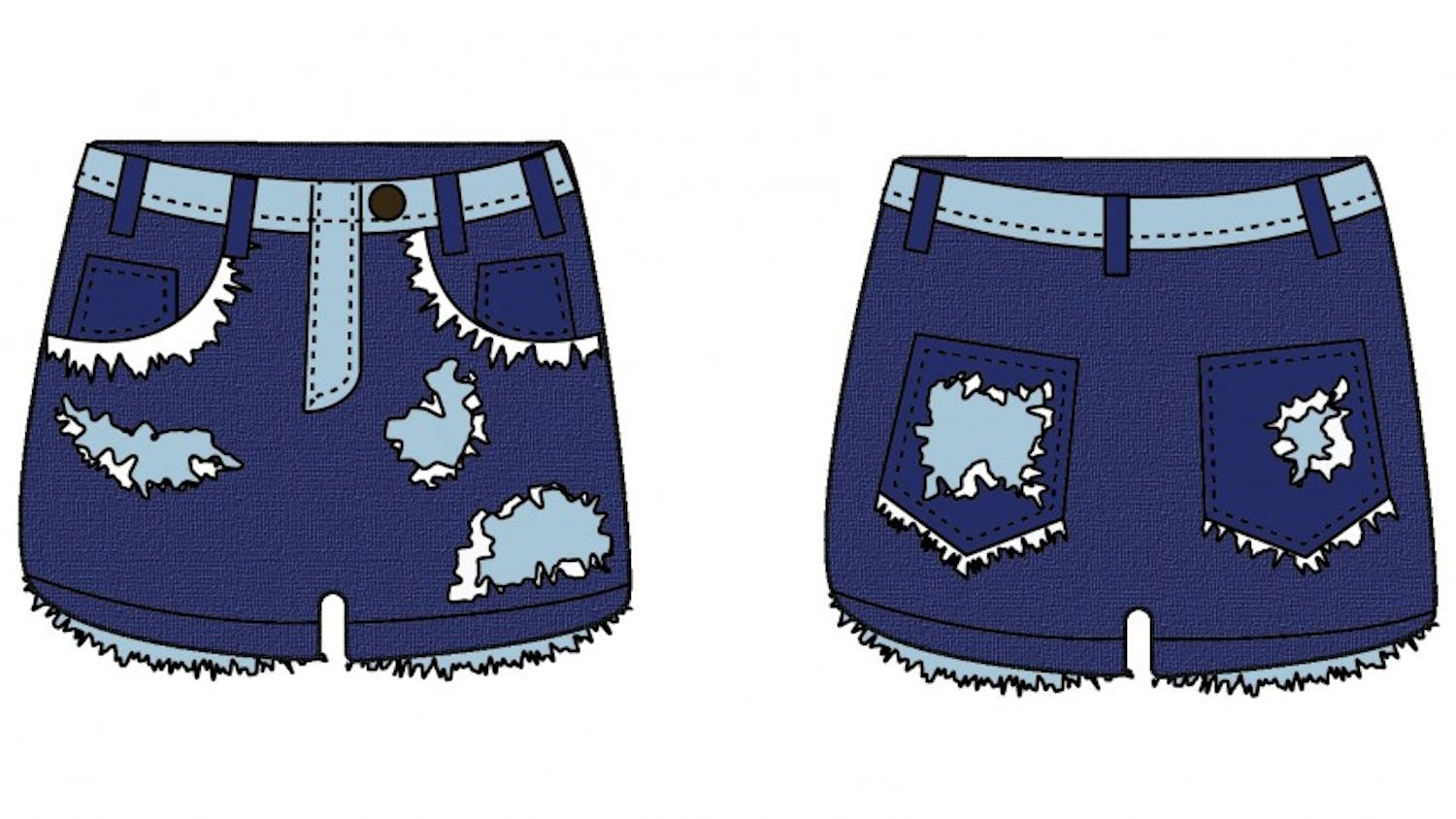Like the rights of women, fashion is constantly evolving. Trends in the fashion industry can be indicative of the social state of women at a given time. For example, the trend of women wearing corsets in the 19th century represented the lack of freedom women had during this time; flapper dresses in the 1920s reflected the increasing freedoms of women; and housewife attire reflected the gender expectations of women in the 1950s. Fashion is often used for self-expression, but retroactively it can also be used to tell history.
Art history and women’s, gender and sexuality studies professor Kristin O’Rourke, who teaches COCO 1.03, “Fashion and Identity: The Power of Clothing,” discussed the political implications of women’s fashion in the 19th century.
“If we think of 19th century clothing of the upper and middle classes, with large, cumbersome skirts, hoops and constricting corsets, women were not able to move freely, nor did they engage much in the public sphere,” O’Rourke wrote in an email. “Up through WWI, women spent a significant part of their day dressing.”
A high beauty standard was set in the 19th century, and that has not entirely changed. American fashion remained relatively unchanged until the 1920s, when the flapper movement challenged 19th century beauty standards. With the flapper movement, women shortened both their hair and their hemlines.
When the 19th Amendment was ratified and women were allowed the right to vote, many women had more of an opportunity to liberate themselves from society’s expectations. At this time, the flapper movement took off and women began to engage in societally “scandalous” activities. Flappers danced to jazz music while smoking cigarettes and sipping liquor. The new lifestyle for these women called for a change in fashion. Comparative literature and women’s, gender and sexuality studies professor Graziella Parati, who teaches COLT 42.01, “Prada, Chanel, Ferrari: History and Literature,” commented on the effect of fashion on the changing rights of women.
“When women change their condition, they change the way they dress,” Parati said.
In addition to shortened hemlines, women began to wear loose dresses that had dropped waistlines. Coco Chanel introduced this style of dress, which is when the “little black dress” was born. O’Rourke noted that Coco Chanel had a positive impact on women’s fashion in the modern era.
“She fundamentally changed the shape of women’s clothing, eliminating large skirts and restrictive undergarments,” O’Rourke wrote. “Her streamlined look and menswear-inspired cuts allowed women to be active and deemphasized a traditional feminine shape and style, which meant breaking the long-standing association of women with the frivolity of fashion.”
O’Rourke added that Chanel’s design aligned with the revolutionary changes occurring for women during her time.
“These changes coincided with social changes — women had recently acquired the right to vote, more young women were working and living alone in cities, more women were engaged in sports,” O’Rourke said. “So, in my opinion, this really created the model for what we still have of a modern type of woman.”
The 1940s brought even higher hemlines and more ways for women to express their individuality. Hourglass silhouettes were now on trend, but women added “masculine” features to their wardrobes. As WWII waged on, women adopted military silhouettes and utility suits. The 1940s was the first time women could wear pants, because many women worked in the factories during the war in which pants were the safest things to work. Pants quickly escalated from workwear to casual wear for women, which increased masculine influences in women’s fashion. In the 1940s, women’s swimwear incorporated increasing degrees of midriff exposure as the bikini emerged. Many women deemed bikinis too revealing, but some adventurous ones wore them. According to women’s, gender and sexuality studies professor Jennifer Sargent, fashion in the 1940s into the 1950s gave women more freedom in their self-expression.
“We saw women wearing pants, owning what was traditionally the ‘male’ fashion, being able to cover their bodies or uncover their bodies in a far more unique and individual way and to be able to gender bend,” Sargent said.
Although the 1940s introduced more masculine influences into women’s fashion, the 1950s brought in the housewife fashion trend of full skirts, cinched waists and large busts. It is important to note, however, that the top designers of women’s fashion in the 1950s were men. Christian Dior is credited with creating “The New Look,” which is what we know as the 1950’s aesthetic. With this, Dior sent the fashion industry backward. O’Rourke commented on the implications of Dior’s new design at the time.
“There was, of course, a backlash in the 1950s with a return to more traditional ‘values’ and gender roles, exemplified by the restrictive, hyper-feminine style of Dior’s ‘New Look’ dresses with tight waists, large skirts and high heels” O’Rourke said.
Much of social change in the 1960s was dominated by feminists who fought for equal pay, ending domestic violence and sexual harassment, and ending the expectation that women would be housewives. Women in the 1960s challenged gendered fashion trends. It was then that miniskirts made their debut and boyish silhouettes came back to style. The corsets and girdles were gone, which made the 1960s “a second flapper era” as women began cutting their hair short again and even began to go braless. These women embraced 1960s’ flower power and individuality.
“The ’60s was the first time we saw women feeling not only empowered by fashion but owning fashion for themselves and not for attracting anyone for external validation,” Sargent said. “They were very much using fashion for internal validation.”
The 1970s also brought radical changes in fashion trends like bell bottoms and platform heels. Feminine silhouettes became more popular, but women also continued to dress in masculine attire. Furthermore, pantsuits became more popular for women in the 1970s as more and more women held professional jobs.
Masculine fashion influences made a mark in the 1980s, with the use of shoulder-padded blazers as a political statement. Women wore these large blazers as a way to show power in the workplace, where men were dominant. The expectation for women to dress a certain way at work has extended to today’s expectations.
“Certain professions still demand a masculine form of dress,” Sargent said. “The more ‘conservative’ the profession, the more masculine the dress for women."
The 1980s and 1990s also brought opportunities for women to rebel in their fashion choices. Punk and grunge came onto the fashion scene and people began to be more and more experimental in their self-expression. Women’s individuality was at a high.
Women have gained more freedom over the years to express their individuality through their clothes. There is, however, still a high beauty standard for women. According to Parati, however, newer stylists have women’s empowerment in mind, which is promising for the future of women’s fashion.
“Wearing clothes is part of how we project who we are to the world around us,” Parati said. As that projection changes, women’s fashion will continue to evolve.



